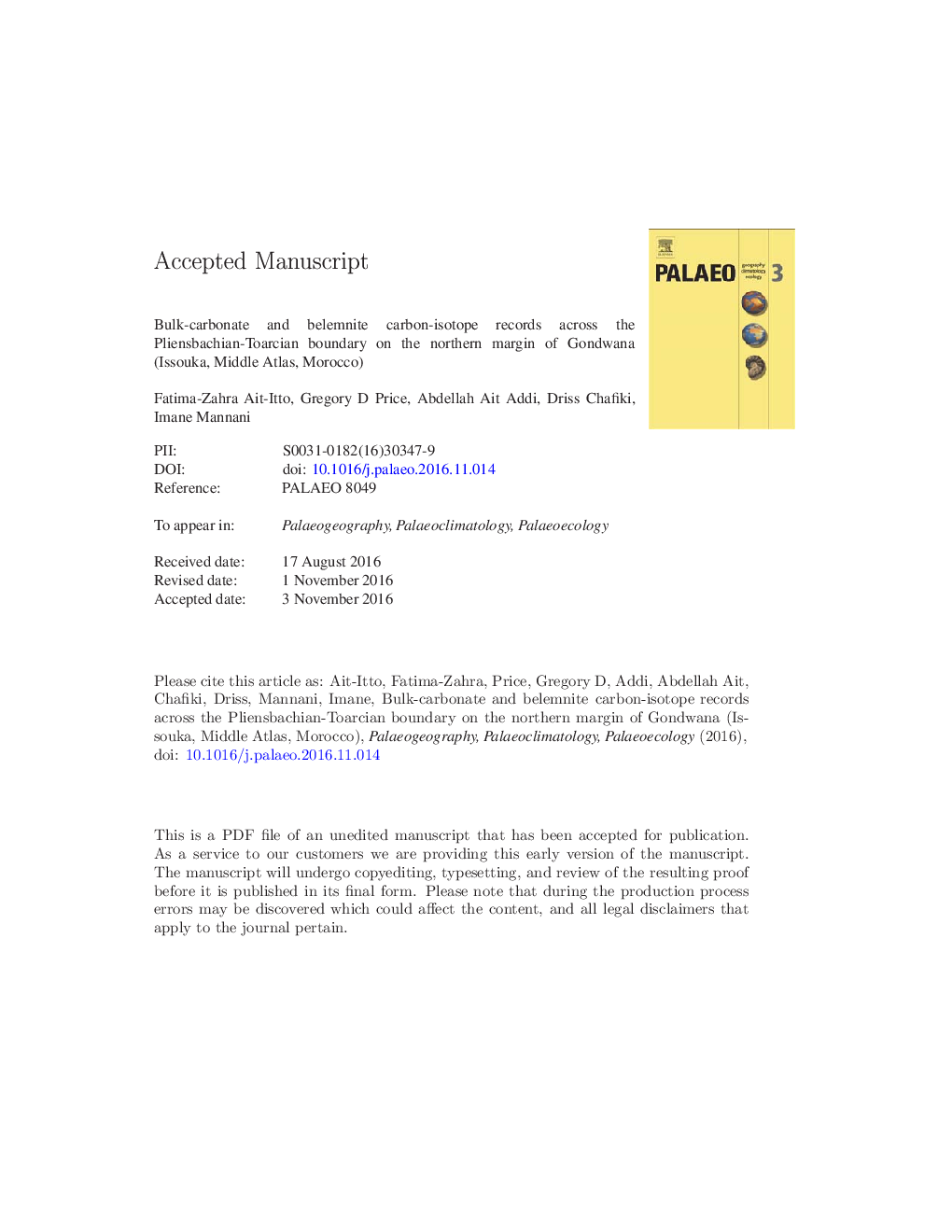| کد مقاله | کد نشریه | سال انتشار | مقاله انگلیسی | نسخه تمام متن |
|---|---|---|---|---|
| 5756024 | 1622126 | 2017 | 37 صفحه PDF | دانلود رایگان |
عنوان انگلیسی مقاله ISI
Bulk-carbonate and belemnite carbon-isotope records across the Pliensbachian-Toarcian boundary on the northern margin of Gondwana (Issouka, Middle Atlas, Morocco)
ترجمه فارسی عنوان
مقادیر کربن اکسید کربن بولمیتی و کربن در مرز پیلینزباخیه-ترسیان در حاشیه شمالی گندوانا (ایزوکا، اطلس میانه، مراکش)
دانلود مقاله + سفارش ترجمه
دانلود مقاله ISI انگلیسی
رایگان برای ایرانیان
کلمات کلیدی
موضوعات مرتبط
مهندسی و علوم پایه
علوم زمین و سیارات
فرآیندهای سطح زمین
چکیده انگلیسی
The data presented here provide the first high-resolution investigation of carbon isotope and geochemical analyses derived from the Pliensbachian-Toarcian boundary, of Issouka, Middle Atlas, Morocco. The isotope data recorded in micrite reveal a stepwise negative carbon isotope excursion with values dropping to â 1.8â° within the Polymorphum Zone. This excursion coincides with major marine biological changes and extinctions and corresponds with European records, supporting the assertion that the excursion was global in extent. The Issouka section is relatively expanded compared to other well-studied sections in Europe. The excursion at the Pliensbachian-Toarcian boundary also shows several similarities with the negative Early Toarcian Event. In contrast, carbon isotope values derived from coeval belemnites show positive values. The belemnite δ13C data presented here suggest spatial heterogeneity in the carbon isotopic composition of dissolved inorganic carbon (DIC) in the Early Jurassic ocean. Overturning or upwelling of a stratified water mass is inconsistent with our data, as it requires the belemnites to have lived elsewhere and only later to have migrated into the Middle Atlas area where they became fossilized. The oxygen isotope values from belemnite calcite show no distinct trend across the Pliensbachian-Toarcian boundary event, indicative of either no significant change in temperatures or change in seawater δ18O. We suggest that the introduction of any light carbon (e.g. from a volcanogenic source) must have resulted in spatial variability in the δ13C of the dissolved inorganic carbon of seawater. Alternatively, a regional change in the source of the carbonate carrying the isotope signal, could lead to a negative shift in the δ13Cmicrite signature without any relation to variations in the global carbon isotope trend.
ناشر
Database: Elsevier - ScienceDirect (ساینس دایرکت)
Journal: Palaeogeography, Palaeoclimatology, Palaeoecology - Volume 466, 15 January 2017, Pages 128-136
Journal: Palaeogeography, Palaeoclimatology, Palaeoecology - Volume 466, 15 January 2017, Pages 128-136
نویسندگان
Fatima-Zahra Ait-Itto, Gregory D Price, Abdellah Ait Addi, Driss Chafiki, Imane Mannani,
